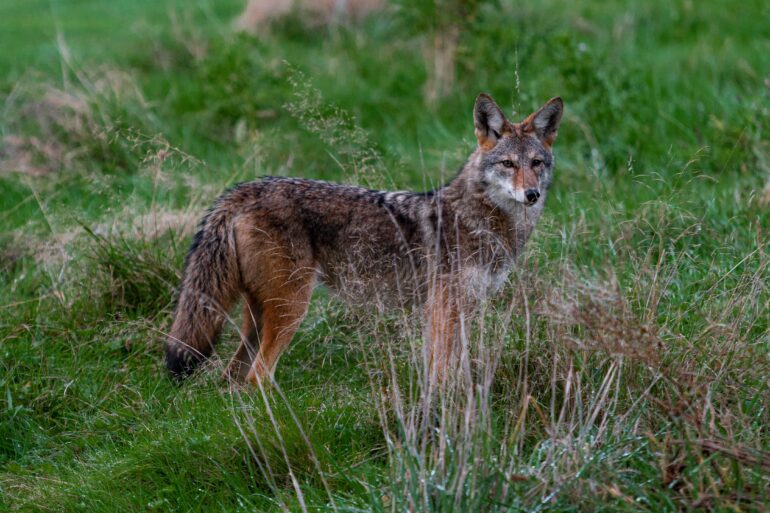Spring is a busy time for urban wildlife, but Toronto residents should remember to keep their distance, the founder of the Toronto Wildlife Centre said.
Natalie Karvonen, who runs Toronto Wildlife Centre, which helps sick or injured animals, said the spring and summer is when animal sightings are most common and the animals are most visible.
Animals will be coming out of hibernation or winter torpor and many will have their newborn children with them.
“Certainly we do get a lot more calls about animals in need of help during the spring and summer generally,” she said.
The calls usually come from people who have found these animals and bring them in according to the Centre’s instructions. Karvonen said the Wildlife Centre has noticed more people have been seeing animals since the pandemic started.
“We admitted more animals last year than we ever have in our history,” she said.
Karvonen said it might be due to more people working from home. They see more animals in their backyards and parks, leading to more calls about sick or injured animals.
However, that’s the only time people should touch or interact with animals. She said that human interaction should be kept to a minimum for animals to thrive.
Toronto’s wildlife offers up a variety of critters to see in backyards and parks. Some are more common, such as squirrels, small birds, and raccoons. Others are less common, such as deer, foxes, and coyotes.
Most have adapted to the urban environment, said Suzanne MacDonald, an animal behaviour researcher at York University who has studied Toronto’s urban wildlife.
“So urban wildlife means we have a very healthy city, and so the fact that we have a thriving urban wildlife means that we have a good city with lots of green spaces,” she said. “So you just want to watch them up from afar and appreciate how beautiful they are, and how lucky we are to have them.”
Some animals thrive in the city, such as peregrine falcons, which have adapted to the tall buildings.
Toronto’s most prominent creature, the raccoon, has also adapted to city life. Indeed, it’s done so well that the city has the most masked bandits of any Canadian city.
MacDonald said raccoons have become larger from easier access to human food, which in turn has led to a population boom.
MacDonald said most animals will avoid humans no matter how well they’ve adapted to the city. Animals that lose that fear usually have become “food habituated” and rely entirely on human food.
City bylaws prohibit feeding or disturbing wild animals and advise people to call 311 if there is an issue.
MacDonald said most animals will shelter in human areas temporarily and leave after a while, especially if they have their young there. It’s best to leave them alone or, if necessary, have them ethically removed.
“Wildlife are protected species in Ontario and so you cannot interfere with them in any way, you can’t hurt them. You can’t remove them, you can’t do anything. You just have to leave them alone,” she said.

While wild animals can be dangerous, they usually aren’t, said Shelley Alexander, a canine specialist at the University of Calgary.
Coexistence works best when humans keep their distance but also let go of their preconceived notions, especially with predators like coyotes. She said they aren’t necessarily afraid of humans but tolerate them.
“They don’t really care that you’re there, but that unnerves a lot of people,” she said.
Alexander said an average of three people are attacked by coyotes each year across the country, but the “social amplification of risk” leads people to believe there is danger. She said that most interactions that go badly are on the person who assumes the coyote is dangerous and reacts.
“People will often say they’re more aggressive or they’re more bold, because they have more tolerance,” she said. That people will “instead of looking at the situation, allowing the animal to move away or avoiding the animal, [they] will sometimes react by running or screaming.”
Alexander said this also extends to pets too.
Dogs and cats will try to pick fights or hunt wild animals and are likely to get hurt. She said education is key to helping people realize that even large canines aren’t inherently dangerous or attack people.
There are many online education sites about living with coyotes to help people understand and protect wild dogs.
The Toronto Wildlife Centre also offers education on animals, how dangerous they are, and how to react to them, as well as programs promoting peaceful coexistence between animals and humans.


